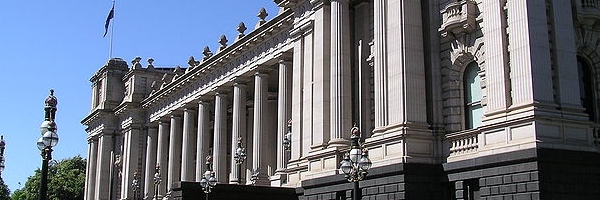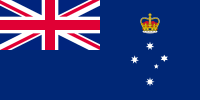






Welcome to coverage of the 2018 Victorian state election, provided by yours truly at KortJackson.org!
How did we get to here? (A timeline)
In 2014, the Victorian state Labor Party (a branch of the federal Australian Labor Party) successfully won back government after four years in the wilderness when a surpise saw John Brumby's Labor government defeated in 2010. Initially, Labor polled well in Victoria (which isn't a real suprise: Victoria tends to favor Labor.), and Premier Daniel Andrews polled quite high in popularity ratings. However, a few minor governmental scandals and a kerfluffle with Victorian firefighters saw the Coalition (a center-right political arrangement with the Liberal Party and the National Party) briefly appear competitive, and even the Opposition Leader Matthew Guy win a couple of polls as Better (choice for) Premier.
However, as the four year term of government came to its mandatory fixed term end, the multiple leadership elections of the federal Liberal Party room leading to Scott Morrison winning the leadership (and becoming Prime Minister) has led to the Australian populace voicing displeasure with the continued runctions of discontent filtering down into state politics. Coupled with Premier Andrews righting his government's ship of state, Labor seems set to avoid the Coalition's fate in 2014: a one term government. Most polls taken in 2018 have shown Labor in front, sometimes very much well so (53-47 to Labor to as high as 56-44, which would signal a strong win to a landslide for Labor). If this holds up, Labor looks set to defend their turf and maybe expand their tenuous one-seat majority of 45 seats in the 88 seat lower house that will determine the next Premier.
So, how does elections and government work in Australia (namely, Victoria)?
Elections in Australia vary, however, the lower house (The Victorian Legislative Assembly) is done by compulsory voting in each of the 88 electoral divisions for the Victorian Legislative Assembly (all those eligible to vote must register and vote) via a preferential voting ballot (all votes are tallied, and votes are transferred from eliminated candidates in each round until someone holds the majority of votes, in which they are elected). In addition, Australian electoral bodies (in Victoria's case, the Victorian Electoral Commission) will further count the votes until two candidates remain (even if someone obtains a majority and wins the election), determining the final two party or two candidate vote. Whichever party gains a numerical majority of seats (Victoria has 88 divisions for the state legislative assembly, so 45 is the magic number) is considered to have obtained majority government, and the leader of that party tends to become the premier (unless it's the House of Representatives, in which they become the Prime Minister). If a party gains the most seats of all the parties but lacks a numerical majority, they may form a minority government. Unlike in Canada where the largest party may go it alone and win support bill-by-bill, the parliamentary convention is for that party (or a coalition) to gain support from other members of the legislature to form a numerical majority to form government. At the end of the day, a Premier must demonstrate he/she has the ability to accomplish two objectives.
How did we get to here? (A timeline)
In 2014, the Victorian state Labor Party (a branch of the federal Australian Labor Party) successfully won back government after four years in the wilderness when a surpise saw John Brumby's Labor government defeated in 2010. Initially, Labor polled well in Victoria (which isn't a real suprise: Victoria tends to favor Labor.), and Premier Daniel Andrews polled quite high in popularity ratings. However, a few minor governmental scandals and a kerfluffle with Victorian firefighters saw the Coalition (a center-right political arrangement with the Liberal Party and the National Party) briefly appear competitive, and even the Opposition Leader Matthew Guy win a couple of polls as Better (choice for) Premier.
However, as the four year term of government came to its mandatory fixed term end, the multiple leadership elections of the federal Liberal Party room leading to Scott Morrison winning the leadership (and becoming Prime Minister) has led to the Australian populace voicing displeasure with the continued runctions of discontent filtering down into state politics. Coupled with Premier Andrews righting his government's ship of state, Labor seems set to avoid the Coalition's fate in 2014: a one term government. Most polls taken in 2018 have shown Labor in front, sometimes very much well so (53-47 to Labor to as high as 56-44, which would signal a strong win to a landslide for Labor). If this holds up, Labor looks set to defend their turf and maybe expand their tenuous one-seat majority of 45 seats in the 88 seat lower house that will determine the next Premier.
So, how does elections and government work in Australia (namely, Victoria)?
Elections in Australia vary, however, the lower house (The Victorian Legislative Assembly) is done by compulsory voting in each of the 88 electoral divisions for the Victorian Legislative Assembly (all those eligible to vote must register and vote) via a preferential voting ballot (all votes are tallied, and votes are transferred from eliminated candidates in each round until someone holds the majority of votes, in which they are elected). In addition, Australian electoral bodies (in Victoria's case, the Victorian Electoral Commission) will further count the votes until two candidates remain (even if someone obtains a majority and wins the election), determining the final two party or two candidate vote. Whichever party gains a numerical majority of seats (Victoria has 88 divisions for the state legislative assembly, so 45 is the magic number) is considered to have obtained majority government, and the leader of that party tends to become the premier (unless it's the House of Representatives, in which they become the Prime Minister). If a party gains the most seats of all the parties but lacks a numerical majority, they may form a minority government. Unlike in Canada where the largest party may go it alone and win support bill-by-bill, the parliamentary convention is for that party (or a coalition) to gain support from other members of the legislature to form a numerical majority to form government. At the end of the day, a Premier must demonstrate he/she has the ability to accomplish two objectives.
1. The government of the day must demonstrate confidence of the chamber. Once established, confidence is maintained by succeeding in
passing motions of confidence and defeating motions of no confidence.
If a
motion of no confidence is passed, OR a motion of confidence fails, the
government has lost the confidence of the chamber.
2. The government of the day must demonstrate they can secure supply. Supply in the Westminster Parliamentary system is the budget. The government of the day must demonstrate they can pass a budget. If the budget fails to pass, it is akin to a loss of confidence of the chamber.
2. The government of the day must demonstrate they can secure supply. Supply in the Westminster Parliamentary system is the budget. The government of the day must demonstrate they can pass a budget. If the budget fails to pass, it is akin to a loss of confidence of the chamber.
Majority
governments (and minority governments via coalitions (not to be confused with the Coalition, a longstanding agreement of several state and federal conservative parties to govern together), if they hold
together) are generally able to pass both of these tests regularly.True
minority governments, on the other hand, do not tend to last
particularly long. All it takes for a minority government to topple is
for the numerically superior opposition and third parties to combine
together to pass a motion of no confidence (or deny supply). In these
cases, an early election can be called, though the laws and conventions dictate that the numerically
superior opposition attempt to cobble together a majority of votes on their
own and form government instead. A early election
is only called if no other path to an alternative government exists.
Side note: In addition to all 88 seats in the Victorian Legislative Assembly being contested, the 40 seat Legislative Council is also up for election. The Legislative Council is the upper house of Victoria, and legislation must be passed through both houses. However, the Legislative Council does not determine if a government has control, and given the additional complications of predicting the upper house, I will only be predicting the Legislative Assembly result. - KJ
Side note: In addition to all 88 seats in the Victorian Legislative Assembly being contested, the 40 seat Legislative Council is also up for election. The Legislative Council is the upper house of Victoria, and legislation must be passed through both houses. However, the Legislative Council does not determine if a government has control, and given the additional complications of predicting the upper house, I will only be predicting the Legislative Assembly result. - KJ
Image of the Victorian Parliament Building is by "donaldytong" and is a "public domain creation", details here.
Image of the Victorian State Flag is a "public domain creation", details here.
